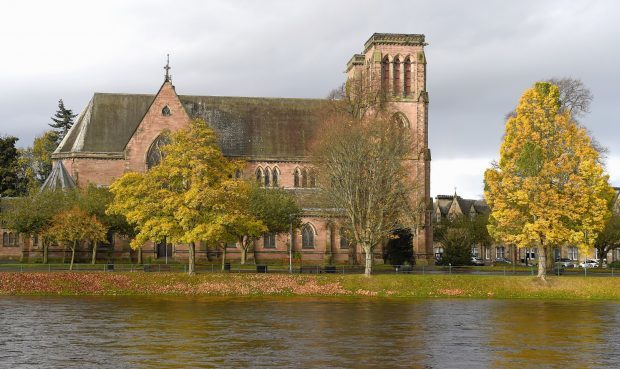Stainless steel reinforcements are to be placed behind the distinctive stone tracery of Inverness Cathedral to strengthen it against strong winds.
St Andrews Cathedral was designed by Alexander Ross and built between 1866 and 1869.
It was the first cathedral to be commissioned in Britain since the reformation.
The A-shaped tracery is above the Cathedral’s north entrance and sits in front of a huge stained glass window above a sculpted religious scene made by Thomas Earp in 1875.
The delicate tracery rises apparently unsupported to culminate in a Celtic stone cross.
In the 1960s it was recognised that the push and pull of the wind was threatening the structure, and repairs were carried out.
These consisted of concrete beams placed behind the tracery to give it support.
During a five yearly inspection cycle in 2016, the concrete beams were found to be cracked and further investigation was carried out by structural engineers Allan Gordon.
Their findings confirmed concerning erosion in the beams and the need to find a permanent solution to wind pressure on the tracery.
Maclean Architecture and Conservation of Inverness will undertake the work and has applied to Highland Council for planning permission to place two stainless steel struts symmetrically behind the tracery.
The struts will be a little over 2 inches in diameter, with a brushed silver finish to avoid any visual impact.
The concrete beams will remain in place, as the architects say their removal is likely to cause significant, potentially catastrophic, damage to the stone work.
Meanwhile, loose original floor tiles inside the cathedral have been removed, repaired and put back.
Barriers are in place to allow the tiles to dry without footfall disturbing the process.
